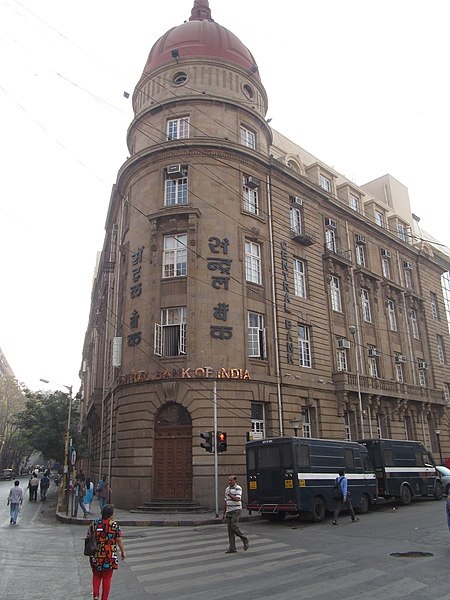economy online news
Mumbai, India
By Nivrita Ganguly
India’s central bank on Friday hiked interest rates for the third time in four months, as Asia’s third-largest economy contends with a widening trade deficit and weakening currency. online news
The Reserve Bank of India (RBI) raised its key lending rate by 50 basis points to 5.40 percent — a level last seen in August 2019 — three months after kicking off a monetary tightening cycle in May.
“Successive shocks to the global economy are taking their toll,” RBI governor Shaktikanta Das said in a televised address, pointing to surging inflation and lower global growth.
“Disquietingly, globalisation of inflation is coinciding with de-globalisation of trade. The pandemic and the war have ignited tendencies towards greater fragmentation.”
India bounced back strongly from the coronavirus pandemic with one of the world’s fastest growth rates but is now grappling with rising costs as commodity prices remain elevated.
The International Monetary Fund last week slashed India’s growth outlook for the ongoing financial year ending March 2023 to 7.4 percent from the 8.2 percent forecast in April.
A broad dollar rally in recent months has contributed to the Indian rupee depreciating sharply to below 80, its lowest level against the greenback on record.
economy online news
Das said the rupee has fared “much better” than other emerging market currencies and “moved in a relatively orderly fashion, depreciating 4.7 percent against the US dollar” since April 1.
He added that the Indian economy was “holding steady and progressing in an ocean of turbulence and uncertainty”.

India’s merchandise trade deficit widened to a record $31 billion in July, compared to $10.6 billion in the same month last year, provisional data released Tuesday showed.
Imports were more than twice as high as exports, led by petroleum products and coal.
India imports more than 80 percent of its crude oil needs and the country’s 1.4 billion people have been hit with rising petrol costs.
Consumer inflation has consistently overshot the central bank’s two-to-six percent target range in the first six months of the year, hitting an eight-year high of 7.79 percent in April, before cooling to 7.01 percent in June.
The RBI retained its growth forecast at 7.2 percent for the 2022-23 financial year and retained its inflation forecast at 6.7 percent.
Aggressive rate hikes by the US Federal Reserve have further exacerbated outflows, with foreign investors withdrawing a net $30 billion from debt and equity in the first half of 2022.
India’s benchmark Sensex index erased early losses to trade 0.56 percent higher on Friday following the interest rate decision.
ng/grk/cwl
© Agence France-Presse. All rights are reserved.
economy online news
Notes from APS Radio News
During the past few years, a number of the world’s central banks have engaged in massive programs of monetary expansion, even as jobs and businesses were lost by way of virus-related restrictions and quarantines. online news
For example, beginning in March of 2020, the US Federal Reserve engaged in a substantially greater program of monetary expansion by purchasing hundreds of billions of dollars of Treasury and corporate bonds.
Since the early part of March 2020 to date, the Federal Reserve has added over $4 trillion to its holdings.
In particular, whereas on or about February 24, 2020, the holdings of the Federal Reserve stood at $4.2 trillion, on or about January 17, 2022, the holdings of the Federal Reserve stood at about $8.9 trillion.
As well, the Federal Reserve has kept interest rates low.
Recently, Jerome Powell, the head of the Federal Reserve, said that he wasn’t concerned about inflation and that, for the none, the Federal Reserve would keep interest rates at low levels.
Another examples is that of the Bank of Japan.
According to Fred Economic Data, as of October 2021, the Bank of Japan’s holdings were about $6.4 trillion or about 725 trillion Yen.
In the early part of March 2020, the Bank of Japan’s holdings were $5.3 holdings. During the period mentioned, the Bank of Japan added over one trillion dollars to its holdings.
A number of corporations have been borrowing money inexpensively and have been purchasing their own shares of stocks, increasing share prices of stocks.
Still, there are concerns among investors.
economy online news
A number of them have expressed concerns about central banks’ eventually increasing interest rates, as, during the past year, inflation levels have been increasing.
The combination of low interest rates, expansive monetary policies, fiscal stimulus programs, which themselves have infused trillions into the US economy, and shortages of goods and services caused by virus-related restrictions and lockdowns has increased levels of inflation.
Investors also have worried, for example, about announcements that were made by companies like Toyota and VW; months ago, those companies announced that because of shortages of particular types of material, they would be reducing levels of production.
Months ago, the results of a survey of UK manufacturers were released.
That survey indicated that many businesses in the UK were concerned about shortages of supplies.
In general, jobs and businesses have been lost by way of mandates, restrictions and quarantines, which, in their turn, were imposed by way of the virus narrative.
In the US, overall, the mortality rate of the virus is about .069%, according to Statista, an award-winning service.
The recovery rate is over 99% for most age groups.
What has followed in the wake of lockdowns and mandates has been the infusion of trillions of dollars into the US economy, the increasing succeess of online businesses like Amazon and other large online retailers, various bank and tech-related stocks, the shuttering of small to medium-sized businesses and the loss of millions of jobs.
Another result has been the increasing levels of inflation, especially those of food and fuel.
In official terms, for purposes of reporting, the US Labor Department uses what is called “core inflation”.
Core inflation excludes items like food and fuel, as those are deemed too volatile.
economy online news


